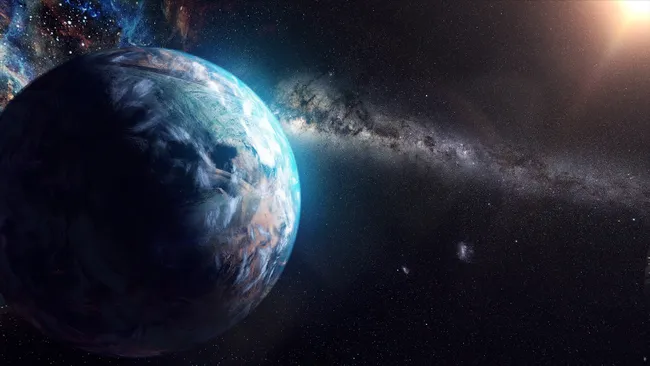Simulations propose the presence of five Earth-like worlds in the outer regions of the solar system.
Identifying the Mars- or Mercury-size exoplanets that may be orbiting in the outer reaches of our solar system poses a significant challenge. Most astronomers agree that our solar system consists of only four terrestrial planets, which are rocky in nature and located close to the sun. However, recent research suggests that there could be up to five more planets lurking at the outer boundaries of our solar system.
These additional planets are known as free-floating planets (FFPs) or rogue planets, as they do not orbit a star. They can either form independently from gas clumps that are not associated with any star or originate from stars but are later ejected from their original orbits. The James Webb Space Telescope (JWST) has already detected numerous rogue planets within the Milky Way and beyond, including pairs of Jupiter-size planets in the Orion constellation. Computer simulations indicate that most FFPs are likely to be similar in size to Mars.
While some rogue planets are expelled from their star systems, others can be captured by stars due to their gravitational pull, becoming permanent members of a solar system. In a recent study published in the Astrophysical Journal Letters on December 18, 2023, a researcher proposes that our own sun, during its early stages, may have attracted rocky FFPs as well.

Amir Siraj, a doctoral candidate in Astrophysics at Princeton University and director of the university’s Interstellar Object Studies program, conducted a study to determine the likelihood of our infant star trapping a rogue planet. Using previously developed models and equations based on observations of FFPs,
Siraj performed 100 million simulations, adjusting factors such as orbit shape to estimate the number of rocky worlds the sun may have captured. The study revealed that there could be two planets with a mass similar to Mars or three to five planets with a mass similar to Mercury’s, located approximately 1,400 astronomical units away from the sun. These trapped rogue planets would be situated in the Oort Cloud, a hypothetical bubble of icy, mountain-sized objects that surrounds the solar system. It is important to note that these newly proposed planets are separate from Planet X, a hypothetical Neptune-like world that scientists have predicted based on the unusual trajectories of objects in the Kuiper Belt. Unlike the new study, which relies on theory, the existence of Planet X is inferred from observations.
Despite the fact that the captured terrestrial worlds are expected to resemble Earth more than Planet X, their potential as habitable land remains uncertain. While there may be water in the form of icy sheets, the sunlight on these planets would be very faint, similar to the brightness of moonlight on Earth. However, since these planets originate from other star systems and are classified as exoplanets, future space missions focused on investigating exoplanets may prioritize studying them.
Discovering these newly proposed planets will be even more challenging than locating Planet X, as they are significantly smaller and farther away than the aforementioned planet. Siraj suggests that the Vera C Rubin Observatory, currently under construction in Chile and set to become operational in 2025, could potentially identify a former FFP (Free-Floating Planet) that is closer than 700 AU. However, this would only be possible if the planet is located in the Southern sky, close enough to us, and possesses a high enough albedo, meaning it reflects a significant amount of the light that falls upon it.
This article is republished from livescience under a Creative Commons license. Read the original article.
Do not forget to share your opinion with us to provide you with the best posts !



0 Comments